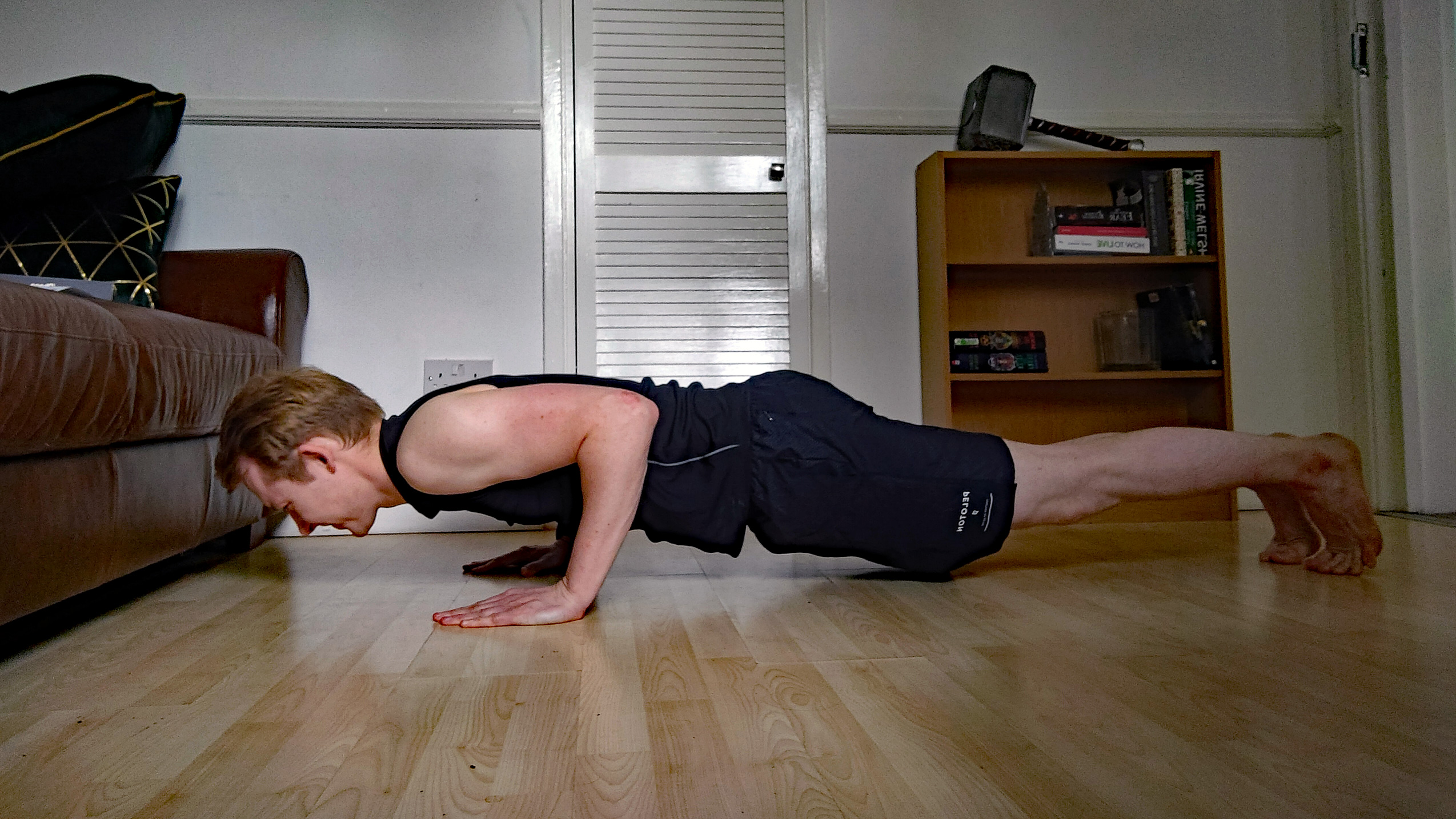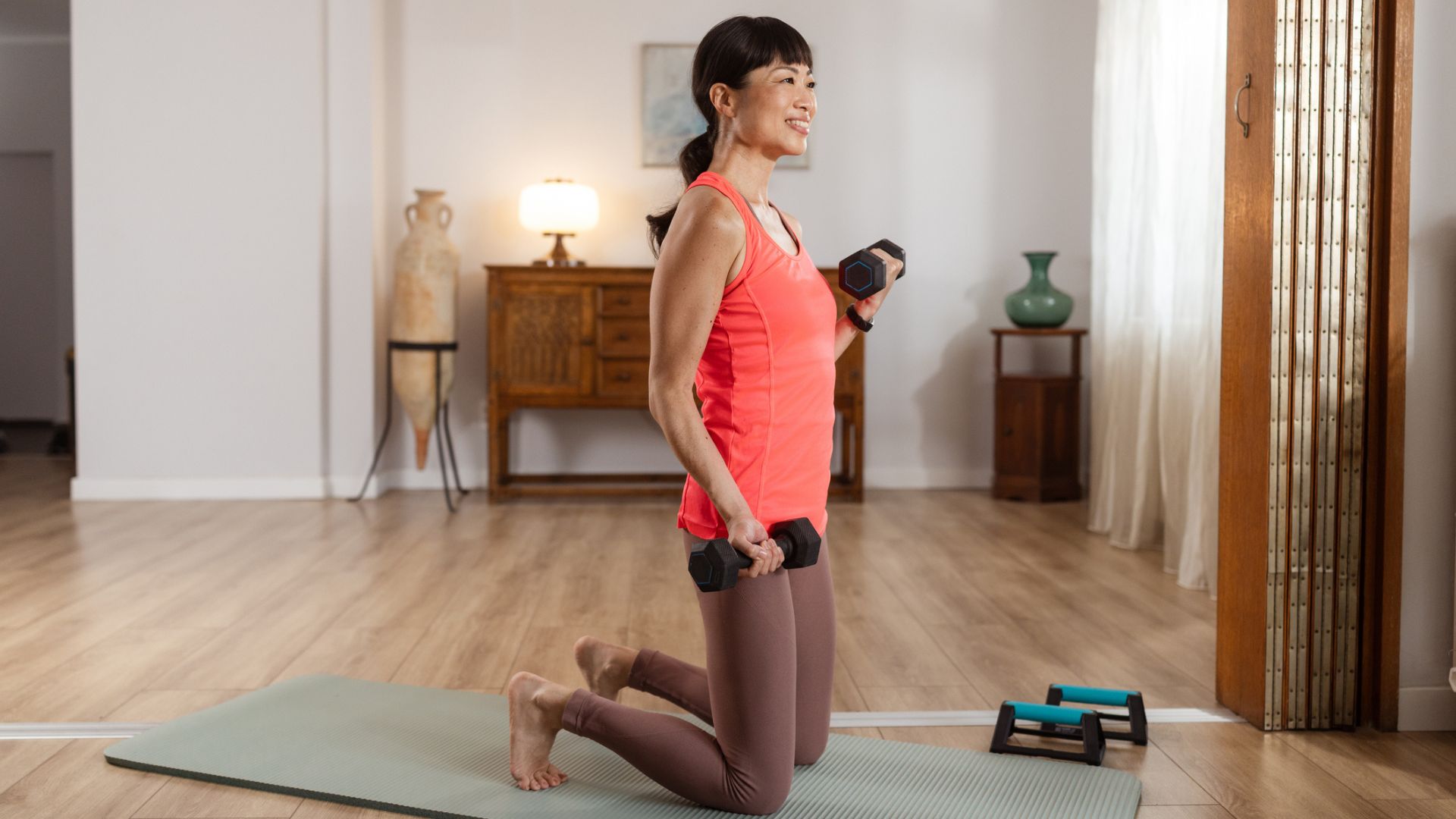I tried the "Bring Sally Up" push-up challenge, and it's still insanely difficult
Our writer attempts the classic Bring Sally Up push-up challenge and discovers it's still incredibly tough


Few fitness challenges are as simple as the "Bring Sally Up" push-up challenge, but "simple" doesn't necessarily translate to "easy".
Even if you're a seasoned resistance trainer, putting in hours with barbells and the best adjustable dumbbells, this classic military calisthenics challenge is going to test you. It requires a strong core, chest, triceps, the ability to hold a plank position for at least three minutes, and a bit of mental toughness.
Many people will know what the Bring Sally Up challenge is, but for the uninitiated, you play the song "Flower" by Moby, which consists of a hook played on repeat: "Bring Sally up, bring Sally down, lift and squat, gotta tear the ground". Every time the song says "bring Sally up" you push up.
Every time the song says "bring Sally down", you lower yourself down, until you're hovering just off the ground. You do this until the song ends, three minutes and 32 seconds later. You could do this challenge with any bodyweight exercise, such as squats or even pull-ups for the truly masochistic, but the garden-variety version you'll see online tends to be centered around push-ups.
I would say I'm generally quite healthy. I train three or four times a week, usually a mixture of strength training and running with the occasional yoga class. I know how to do a push-up properly, and eat pretty well. I thought this challenge was going to be relatively straightforward, and I'd complete at least two minutes. Spoiler alert: it wasn't, and I didn't. You can see my attempt below:
As you can see, I managed just 1:23 minutes before I crumpled. Initially, I felt I started pretty strong, but that first extended hold began to burn through my triceps and my abs began to shake. When I came out of that hold, I felt my arms rotating as my body tried to shift the weight from my triceps to my shoulders – not a good sign.
By the time I called it quits, my triceps were positively on fire, but it was my core that gave out first.
Get the Fit&Well Newsletter
Start your week with achievable workout ideas, health tips and wellbeing advice in your inbox.
The plank holds at the bottom of the push-up were, by far, the most taxing thing about this challenge. You're holding the push-up position at the hardest point, the "bottom" of the lift, which is a difficult isometric exercise.
However, it's great for your muscle development and one of the best reasons to try this challenge: researchers from the University of Waterloo found isometric training, like holding plank poses, created more effective core stability in athletes, and other research found it creates as much muscle activation as more dynamic exercises, like normal push-ups.
Want to take this challenge on? I recommend practicing with lots of push-ups and planks, as well as learning how to do a bench press and the best workouts for abs to improve the muscles needed for the sequence. I'm certainly intending to give it another go, and maybe even finish the whole song in a few months' time.
Matt Evans is an experienced health and fitness journalist and is currently Fitness and Wellbeing Editor at TechRadar, covering all things exercise and nutrition on Fit&Well's tech-focused sister site. Matt originally discovered exercise through martial arts: he holds a black belt in Karate and remains a keen runner, gym-goer, and infrequent yogi. His top fitness tip? Stretch.
-
 Do your gut a favor with this dietitian's gut-friendly veggie-filled fried rice recipe
Do your gut a favor with this dietitian's gut-friendly veggie-filled fried rice recipeKeep your tummy happy with this flavorful twist on a favorite
By Lou Mudge
-
 I’m a personal trainer and these are some of my favourite exercises to build core and upper body strength at home
I’m a personal trainer and these are some of my favourite exercises to build core and upper body strength at homeAll you need is a set of dumbbells for this kneeling workout
By Maddy Biddulph